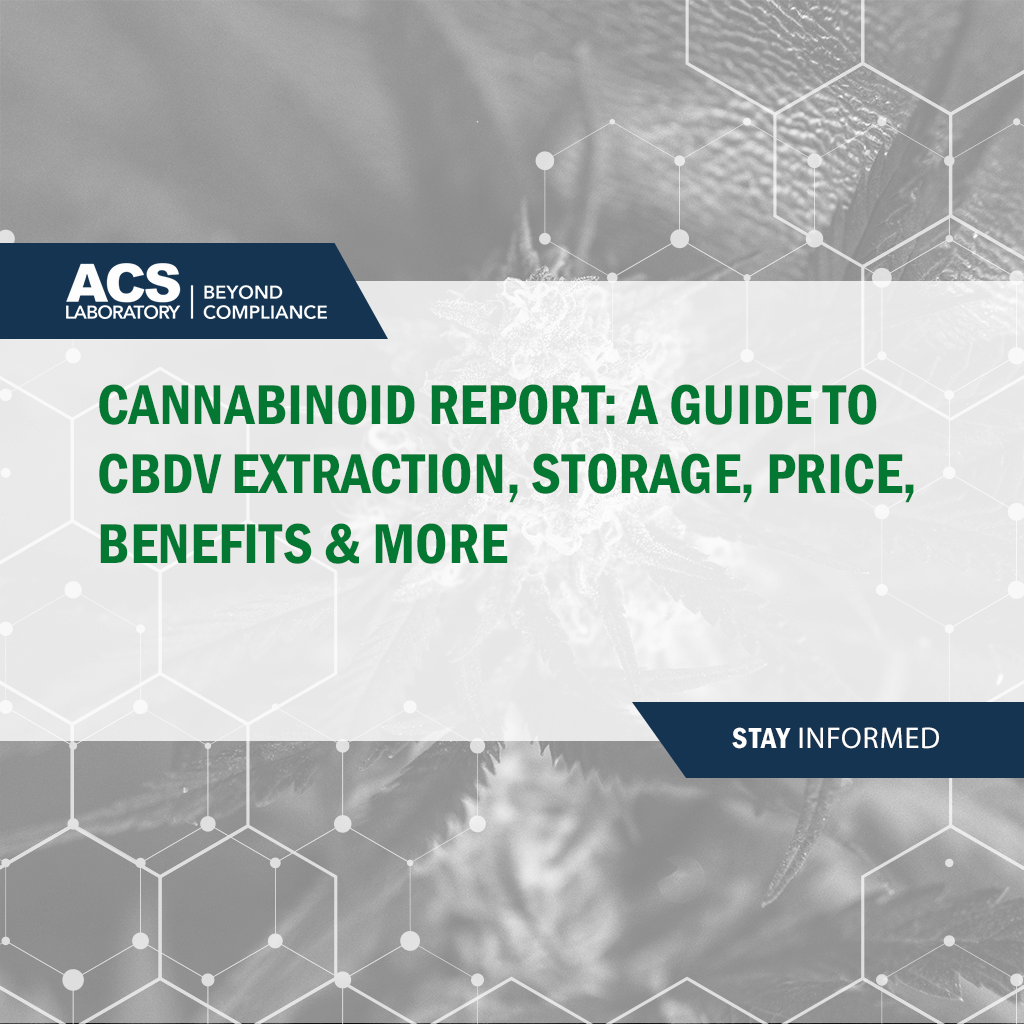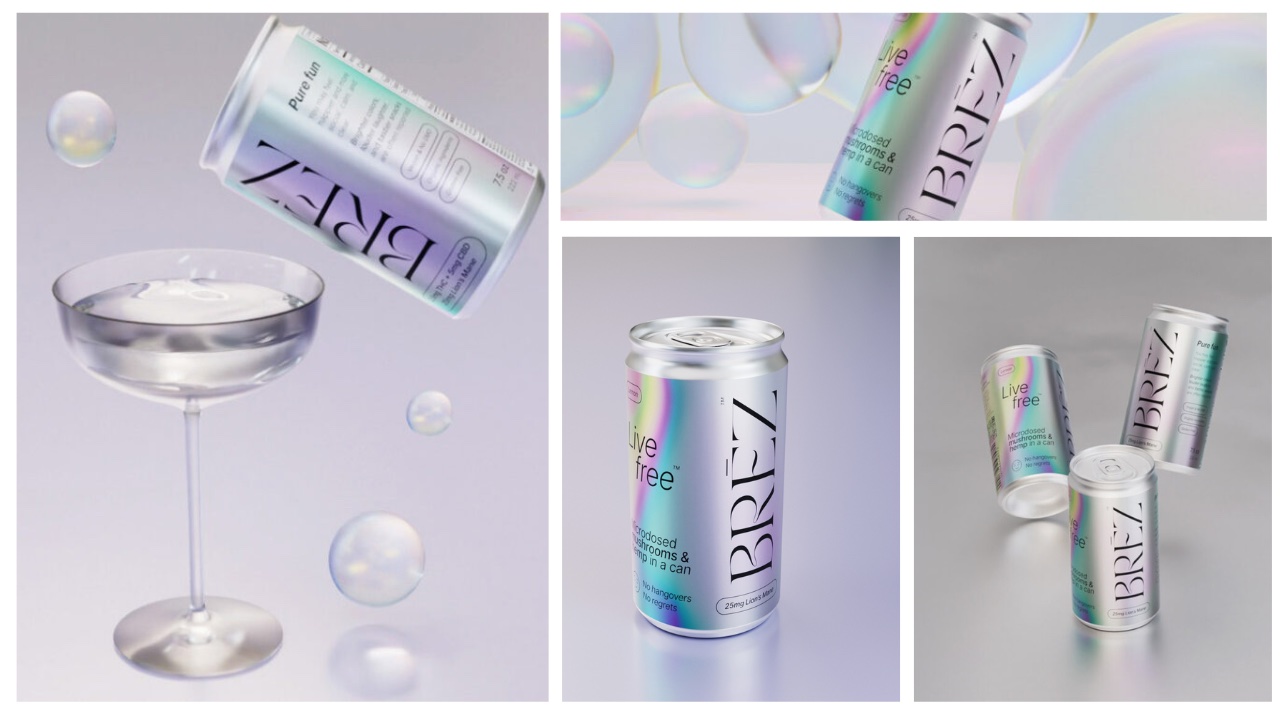Cannabinoid Report: A Guide to CBDV Extraction, Storage, Price, Benefits & More
Cannabinoid Report: A Guide to CBDV Extraction, Storage, Price, Benefits & More
In this post:
- What is CBDV?
- Varin Cannabinoids
- Benefits of CBDV
- How CBDV works in the body
- CBDV products and market
- Potency and testing of CBDV

As cannabis research deepens, it’s clear that the plant’s compounds hold great healing potential. Although CBD and THC enjoy the majority of the spotlight, there are over 100 cannabinoids in hemp and cannabis plants. Cannabidivarin (CBDV), of the “varin” subfamily, is one notable example. CBDV was discovered nearly 50 years ago. But due to federal prohibition, scientists struggled to gain access to the compound for clinical research.
Fortunately, since the 2018 Farm Bill passed, there has been a flurry of studies published on the therapeutic potential of CBDV. Some of these studies were even backed by pharmaceutical giants and the US government!
Until recently, most research was preclinical, meaning that studies focused on animals like mice, rather than humans. However, over the past few years, clinical studies on traditionally hard-to-treat disorders garnered impressive results. We've only scratched the surface of CBDV’s medical potential, but it is evident that the compound holds significant promise.
What is CBDV?
Cannabidivarin, or CBDV, is a cannabis-based chemical compound that shares almost the same molecular structure as CBD. Found in both broad-spectrum and full-spectrum extracts, it is one of over 100 cannabinoids identified from the cannabis plant that has a controlling influence on the physiological activity of cannabis in animals and humans. Specifically, it's part of the varin family.
What are “Varin” Cannabinoids?
Varin molecules, technically referred to as “varinolic cannabinoids,” include CBCV, CBDV, CBGV, and THCV. These are a family of cannabinoid compounds that have three carbon atoms in their alkyl side chain, while neutral versions of cannabinoids, like THC, feature five carbon atoms.
This difference in structure changes their binding affinity. Binding affinity determines the potency and other characteristics of these molecules when they “dock” with cellular receptors within the endocannabinoid system, essentially changing the way they interact and affect the body.
What are the Reported Benefits of CBDV?
Nausea
The body’s endocannabinoid system (ECS) is directly involved with our nausea response. When certain ECS receptors are blocked, we feel nauseous. When their stimulated, nausea symptoms improve. Initial research on rodents shows that CBDV likely acts as an agonist (stimulator) to the CB1 receptors, which inhibits the nausea response.
Epilepsy
Much of the research around CBDV has centered around its effect on seizures. GW Pharmaceuticals, which developed the first FDA-approved CBD drug, Epidiolex, is actively developing a CBDV-based drug known as GPW42006 to reduce or prevent various forms of seizures. GW’s research has shown that CBDV affects the neurochemical pathway of capsaicin receptors, which are involved in both the onset and the progression of several types of epilepsy.
Autism Spectrum Disorder (ASD)
There’s evidence that CBDV can help alleviate many common conditions associated with ASD, such as chronic anxiety, seizures, addictive behavior, and mood disorders. One study found that CBDV reduced acute anxiety in patients diagnosed with ASD by shifting the balance of the stimulating neurotransmitter, glutamate, and the relaxing neurotransmitter, GABA.
This study compared the effects of CBDV in neuro-diverse patients (those with ASD) and neurotypical patients (those without ASD) and noted a higher degree of difference in ASD patients than those without. The results showed that there is, in fact, a link between CBDV and the reduction of ASD symptoms.
Muscular Dystrophy
A study published by the National Research Council in Italy examined the effects of CBD, CBDV, and THCV on three underlying causes of Duchenne’s Muscular Dystrophy (DMD). The team found that CBD and CBDV could restore the function of impaired muscle stem cells, inflammation in the muscle tissue, and reduce defective autophagy (the orderly degradation and recycling of cells). These findings suggest that CBD and CBDV could effectively treat the underlying causes of many different forms of muscular dystrophy, not just DMD.

How Does CBDV Work in the Body?
CBDV & the ECS
CBDV interacts with the endocannabinoid system (ECS), an internal biological system that regulates many functions in the body, the same way as CBD. CBDV does not directly stimulate or suppress the ECS; Instead, it modulates its receptors. Meaning it controls influence on the sensitivity of endocannabinoid receptors based on the body's internal condition.
CBDV & TRP Ion Channels
Both CBD and CBDV mediate specific TRP channels. The TRP ion channels act like sensors located throughout the body. They trigger an alert in the nervous system to detect toxic chemicals or dangerously hot or cold temperatures.
For example, excessive stimulation of the channel known as TRPA1 plays a role in migraine headaches, particularly migraines triggered by cigarette smoke, certain fragrances or aromas, high heat, or freezing temperatures.
Can CBDV Get You High?
CBDV is a non-psychotropic cannabinoid, meaning that it does not have the intoxicating effects of compounds like THC, for example.
CBDV Products
What Type of CBDV Products are Available?
Very few companies produce and sell CBDV-infused products. As more CBDV research surfaces, manufacturers will surely recognize the value of products focused on this minor cannabinoid.
Currently, CBDV tinctures, oils, and edibles are the most common products on the market. Additionally, most full-spectrum CBD, or THCV oils will also contain small amounts of CBDV.
Are There High CBDV Strains?
CBDV is found naturally in most forms of cannabis, but only in trace amounts.
Most prevalently, CBDV is seen in “landrace” strains. Landraces are strains native to certain regions of the world. In particular, Asian and African landrace cannabis strains contain high concentrations of both CBDV and THCV and lower concentrations of THC.
Cannabis cultivators have started using these plants to breed new high-potency CBDV and THCV strains. Some of the highest CBDV strains available today include:
- Medical Mass
- Euphoria
- Painkiller XL
- Royal Medic
- Dance World
- CBD-Victory
- Forbidden V
- Pine Walker
Can You Smoke, Vape, and Ingest CBDV?
Like CBD and THC, you can add CBDV to oils, tinctures, and edibles for consumption. You can also add CBDV to vape cartridges via oils and extracts or smoke flower strains that contain higher levels of CBDV.
How is CBDV Extracted?
Similar to CBD, there are multiple methods for the extraction of CBDV.
- Solvent extraction involves using ethanol, butane, propane, isopropyl, or alcohol to extract cannabinoids.
- CO2 extraction uses a “closed-loop extractor.” This machine contains three chambers. The first one holds pressurized, solid CO2 or dry ice; the second chamber has dried help plant material; the final chamber separates the resulting product.
- Natural oil extraction uses a process that begins with the raw plant materials being decarboxylated (heated) to the desired temperature for a specific amount of time so that the chemicals in the plant are activated and infused into the oil.

The CBDV Market
Is CBDV Legal?
CBDV derived from hemp containing no more than 0.3 percent THC is considered legal on a federal level per the 2018 Farm Bill. Although hemp-derived CBDV is difficult to find, it’s legal in all states as long as it abides by the state THC regulations.
CBDV Potency & Testing
How is CBDV Potency Measured?
Potency tests measure CBDV the same way as CBD, THC, and other cannabinoids. ACS Laboratory uses Ultra-High-Performance Liquid Chromatography (HPLC) machinery to measure and detect CBDV levels in edibles and extracts. The HPLC instrument can test samples at room temperature without heat, which changes the results.
Why Should We Test for CBDV?
The current research is clear that CBDV offers significant anticonvulsant properties. The same research also points to the potential to use CBDV for hard-to-treat disorders like ASD and DMD. As consumers learn more about CBDV, the medicinal value of this rare yet potent cannabinoid will surely become clear.






.jpg)



.png)
.png)
.png)
.png)
.png)